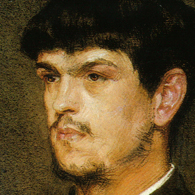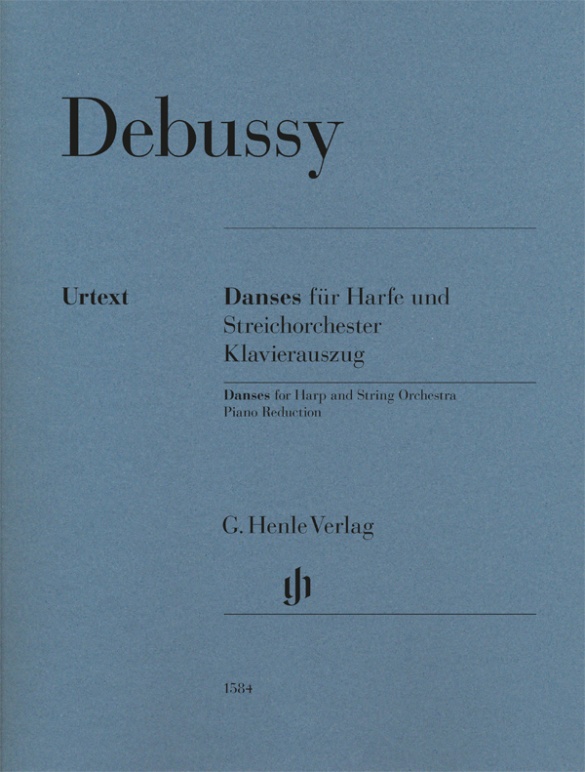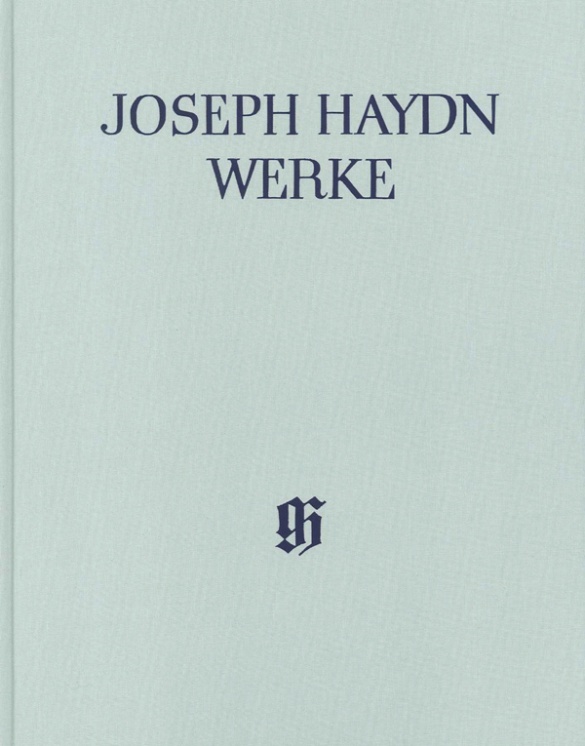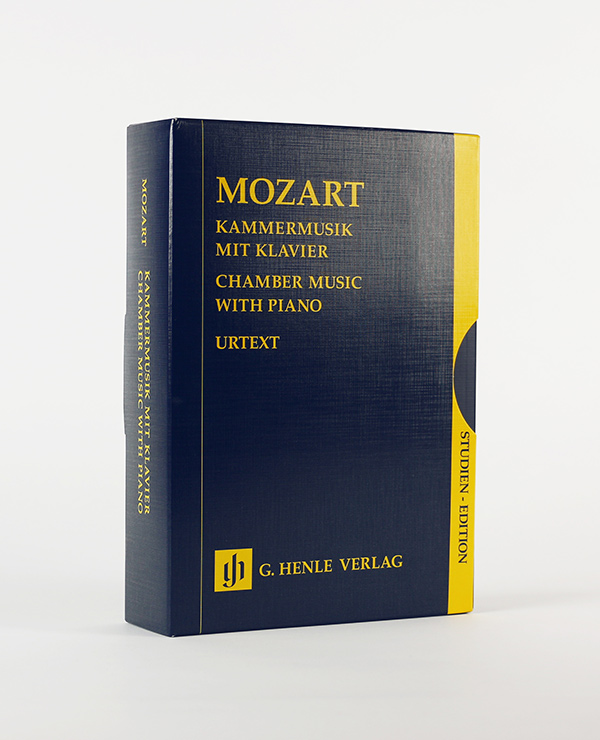Claude Debussy
Danses for Harp and String Orchestra
Debussy wrote these two short dances to a commission from the instrument-making firm of Pleyel, which was keen to use famous names in the marketing of its newly-developed chromatic harp. The dances are also playable without problem on the pedal harp, which was to replace the chromatic harp on the concert platform. The archaic style of the pieces, including modal harmonies, used to express a “sacred” rite and a “profane” dance of joy, points to the enthusiasm for antiquity of Debussy himself and of the artistic world around 1900. Ours is the first critical edition of the pieces, and is based on careful checking of the autograph and first edition. Practical support has been provided by the well-known harpist Margit-Anna Süss-Schellenberger, who has arranged the solo part of this Urtext edition for modern harp.
内容/詳細
作曲家について

Claude Debussy
Most important French composer around 1900, whose music, primarily characterized by its sound, exhibits profound innovations. His oeuvre bears a close relationship to Symbolism.
| 1862 | Born in Saint-Germain-en-Laye on August 22. |
| 1872–84 | Studies at the Conservatoire de Paris. During this time, he travels with the family of Nadezhda von Meck to Switzerland, Italy, Vienna, and Russia, where he becomes acquainted with Russian and Gypsy music. |
| 1884 | Wins the Prix de Rome with his cantata “L’Enfant prodigue.” Thereafter resides in Rome until 1887. |
| 1887–89 | Songs, “Cinq Poèmes de Baudelaire.” |
| 1888/89 | Visit to the Bayreuth Festival; criticism of Wagner. |
| 1889 | Exposition universelle (World Exposition) in Paris, where he learns about East Asian music, which influences his style. |
| 1890 | Connection to Mallarmé and his circle. |
| 1891/1903 | Series of songs, “Fêtes galantes,” after Verlaine. |
| 1891–94 | Orchestral work “Prélude à l’après-midi d’un faune” (“Prelude to the Afternoon of a Faun”) with arabesque-like melodies. |
| 1897–99 | Nocturnes for orchestra and women’s voices. |
| 1901 | Beginning of his activity as a music critic. |
| 1902 | Performance of the opera “Pelléas et Mélisande” after the Symbolist drama by Maeterlinck, which despite criticism spells his breakthrough. |
| 1903–05 | Orchestral work “La Mer” uses symphonic principles and “Impressionist” tonal language. |
| 1905–07 | Books one and two of “Images” for piano. |
| 1906–08 | “Children’s Corner,” children’s pieces for piano. |
| 1909–10/11–1913 | Books one and two of the “Préludes” for piano; the programmatic titles of these character pieces, some of which are quite esoteric, are listed at the end of each one. |
| 1913 | Songs “Trois poèmes de Stéphane Mallarmé.” |
| 1915–17 | Chamber music sonatas, drawing from the French tradition of the eighteenth century. |
| 1918 | Death in Paris on March 25. |
校訂者や運指担当者について

Peter Jost (校訂)
Dr. Peter Jost, born in 1960 in Diefflen/Saar, read musicology, German and comparative studies at Saarland University in Saarbrücken. He did his PhD in 1988 with a thesis on Robert Schumann’s Waldszenen.
From November 1991 to April 2009 he was a research associate at the Richard Wagner Complete Edition in Munich, and since May 2009 has been an editor at G. Henle Publishers. His Urtext editions comprise predominantly French music of the 19th and 20th centuries, including works by Lalo, Saint-Saëns and Ravel.
製品安全に関する情報

G. Henle Verlag
製品の製造元に関する情報はこちらでご覧いただけます。G. Henle Verlag
Forstenrieder Allee 122
81476 München
info@henle.de
www.henle.com
The urtext study score by Henle is very spacious and easy to read, while the urtext edition arranged for pedal harp by Margit-Anna Süss and the piano part edited by Peter Jost are up to Henle’s usual high standard. Jost has also written an excellent Preface ...
Stringendo, 2023Es ist schon erstaunlich, dass von diesem bedeutenden Werk Debussys … bislang keine wirklich authentische und fehlerlos gedruckte Ausgabe verfügbar war. … Nun hat sich der für Urtext-Ausgaben führende Verlag Henle die Aufgabe gestellt, diesen Mangel zu beseitigen und hat durch Peter Jost im Frühjahr 2022 eine grundlegend und großartig durchgearbeitete neue Ausgabe der Danses von Claude Debussy erstellt.
das Orchester, 2023The generous Preface and Comments highlight the extensive research and scrutiny of each note by experts in the field, culminating in a clear, reliable, and comprehensive score.
Strings Magazine (online), 2023おすすめ
autogenerated_cross_selling




